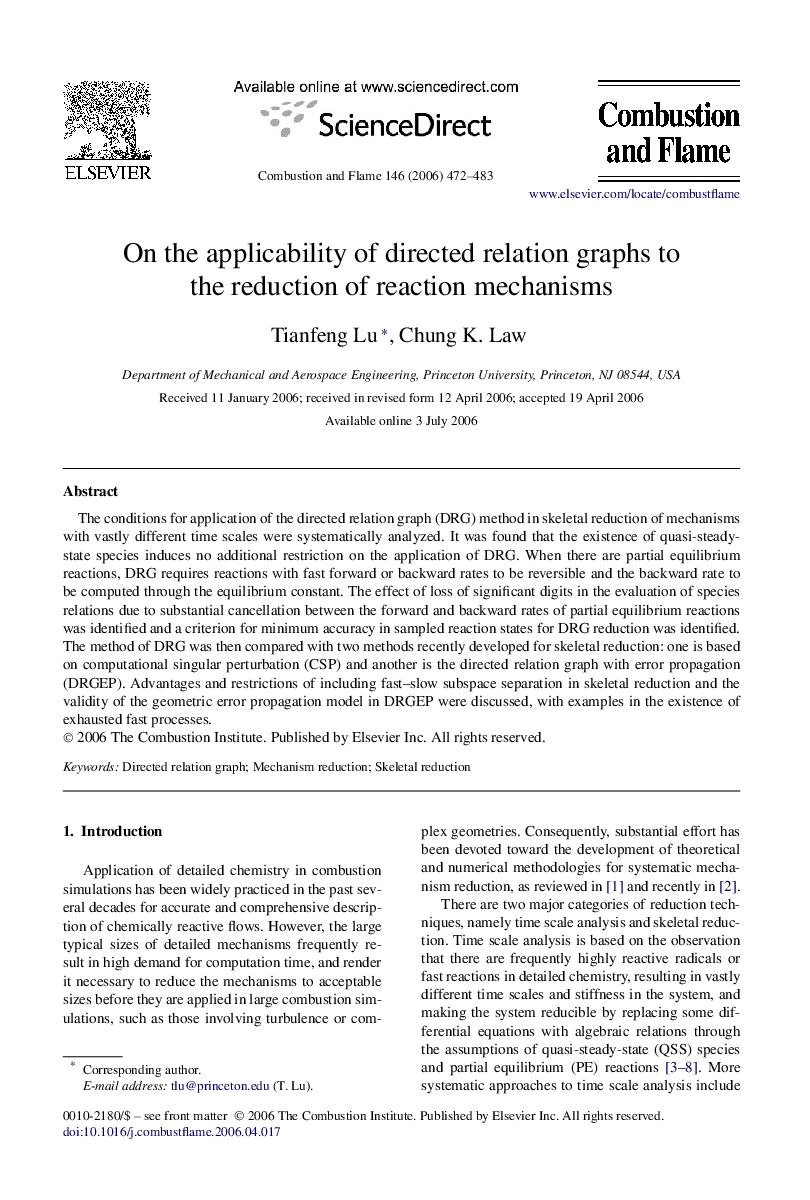| Article ID | Journal | Published Year | Pages | File Type |
|---|---|---|---|---|
| 167497 | Combustion and Flame | 2006 | 12 Pages |
The conditions for application of the directed relation graph (DRG) method in skeletal reduction of mechanisms with vastly different time scales were systematically analyzed. It was found that the existence of quasi-steady-state species induces no additional restriction on the application of DRG. When there are partial equilibrium reactions, DRG requires reactions with fast forward or backward rates to be reversible and the backward rate to be computed through the equilibrium constant. The effect of loss of significant digits in the evaluation of species relations due to substantial cancellation between the forward and backward rates of partial equilibrium reactions was identified and a criterion for minimum accuracy in sampled reaction states for DRG reduction was identified. The method of DRG was then compared with two methods recently developed for skeletal reduction: one is based on computational singular perturbation (CSP) and another is the directed relation graph with error propagation (DRGEP). Advantages and restrictions of including fast–slow subspace separation in skeletal reduction and the validity of the geometric error propagation model in DRGEP were discussed, with examples in the existence of exhausted fast processes.
